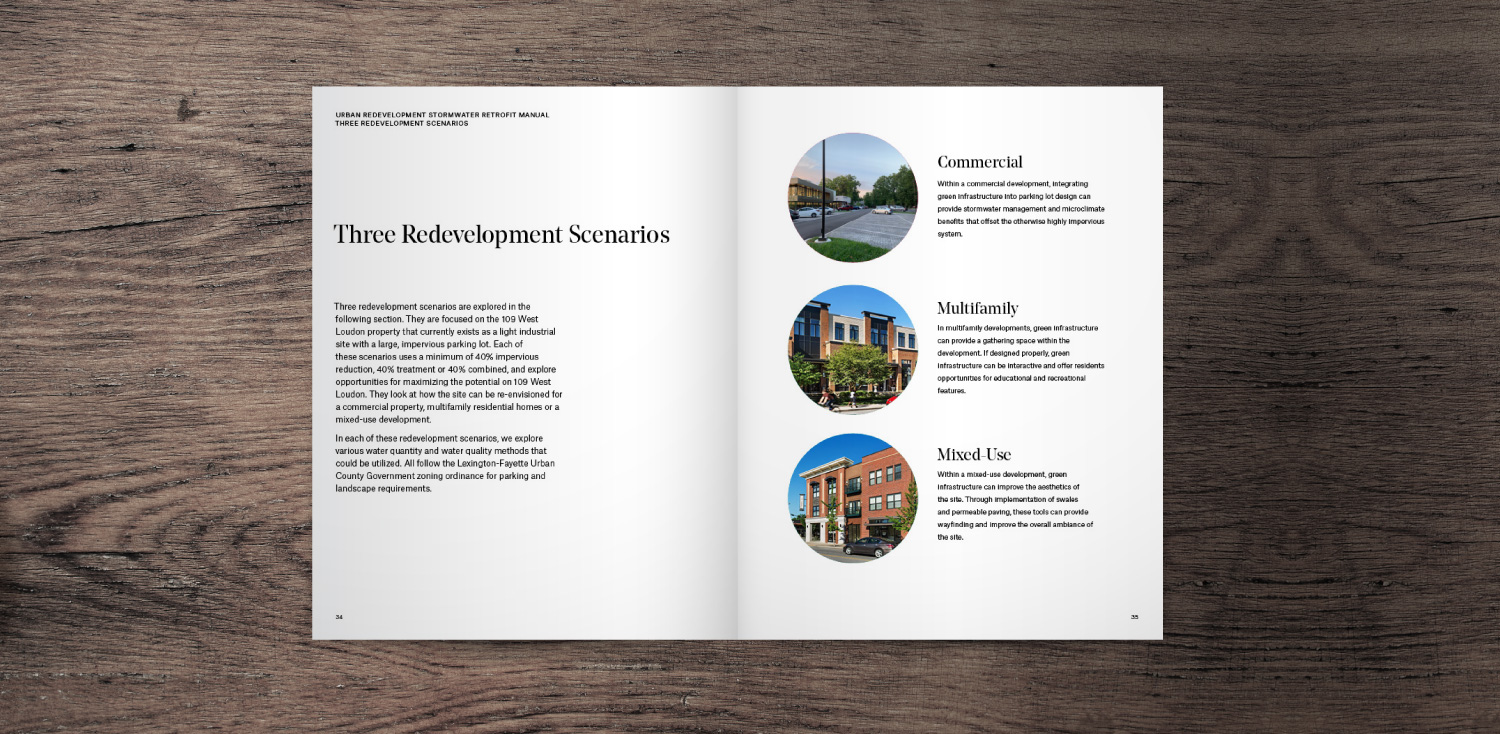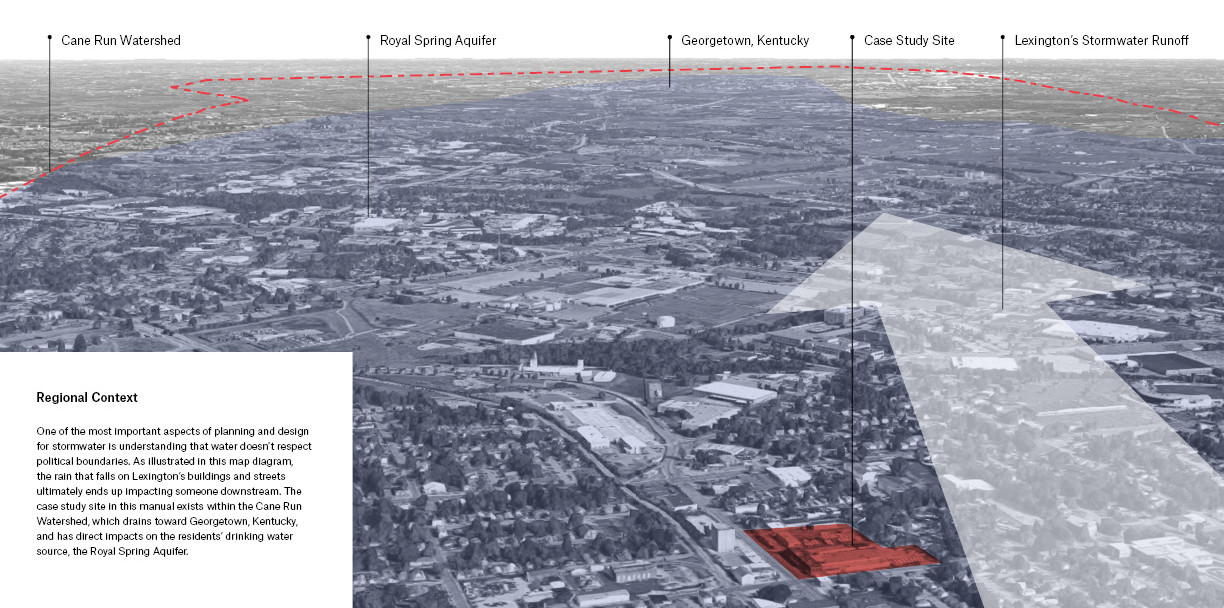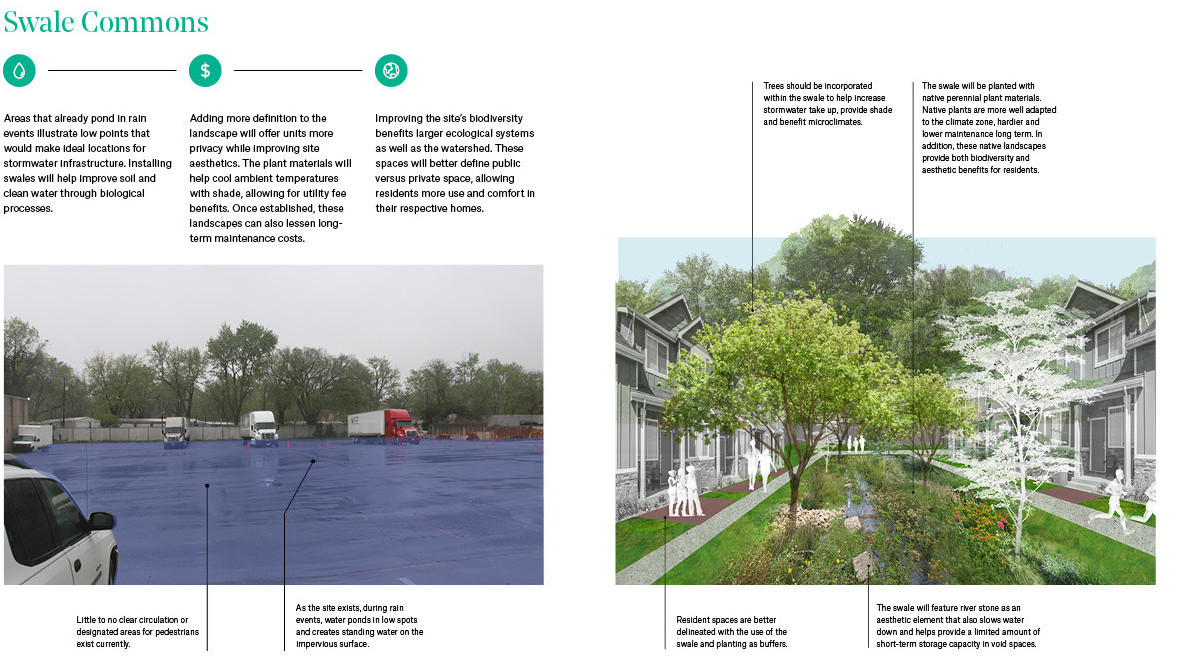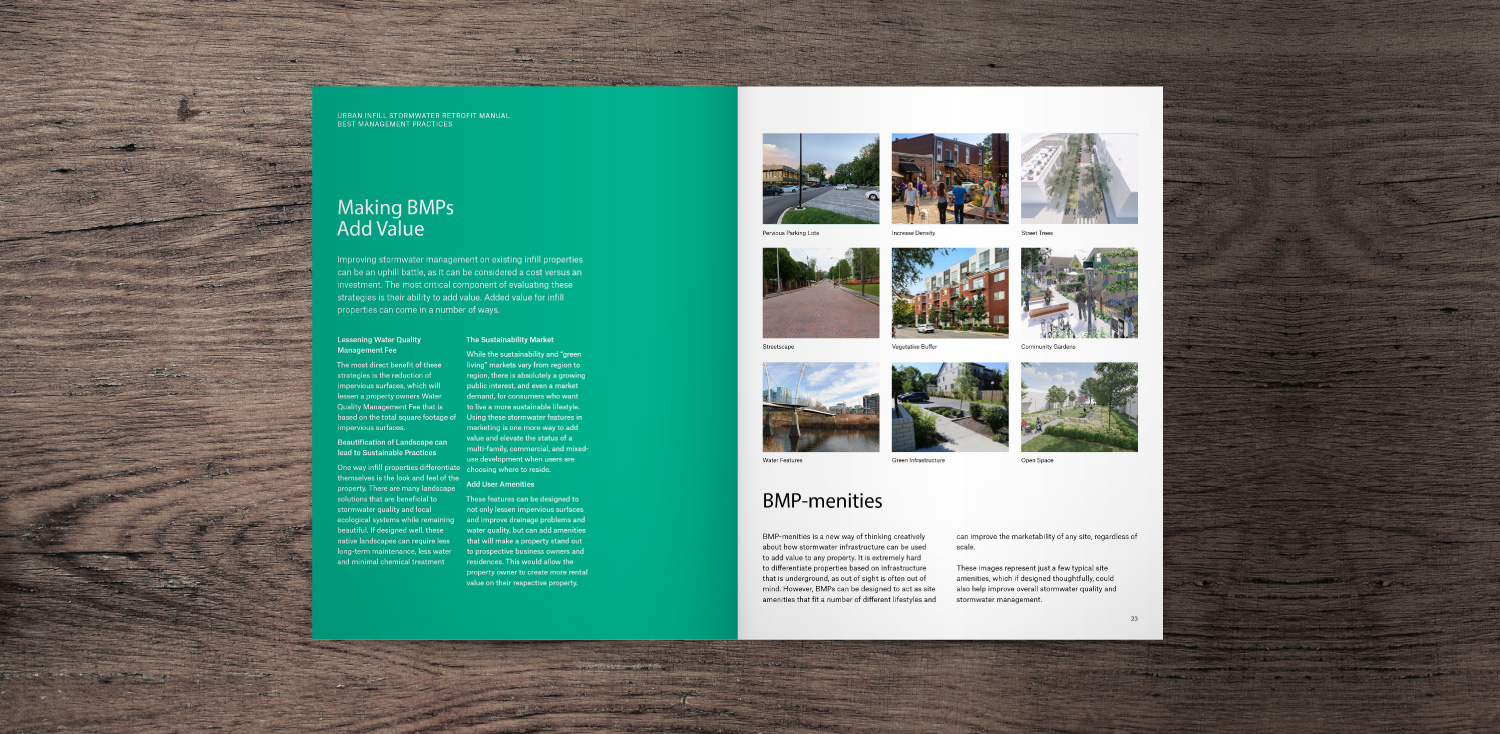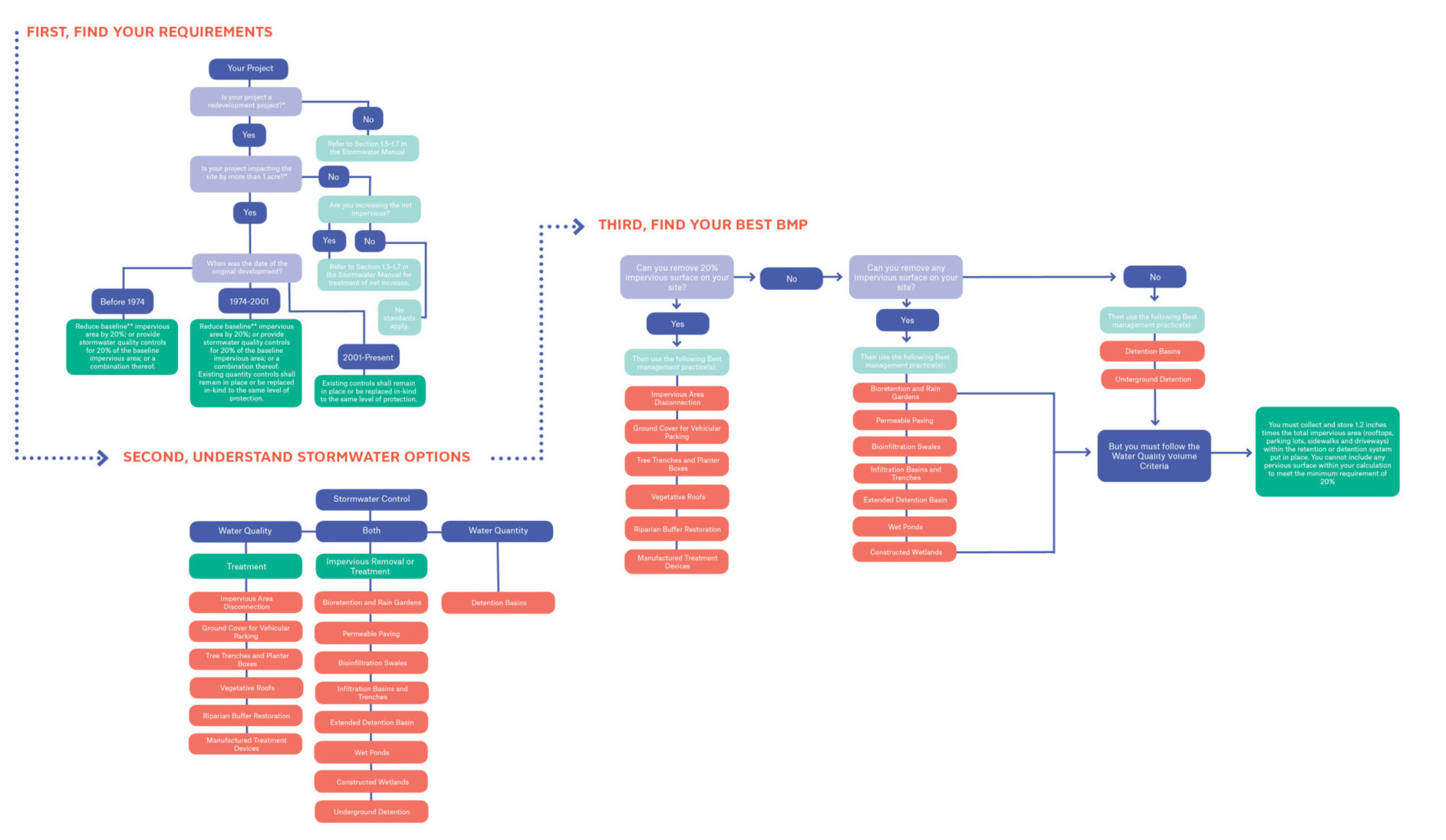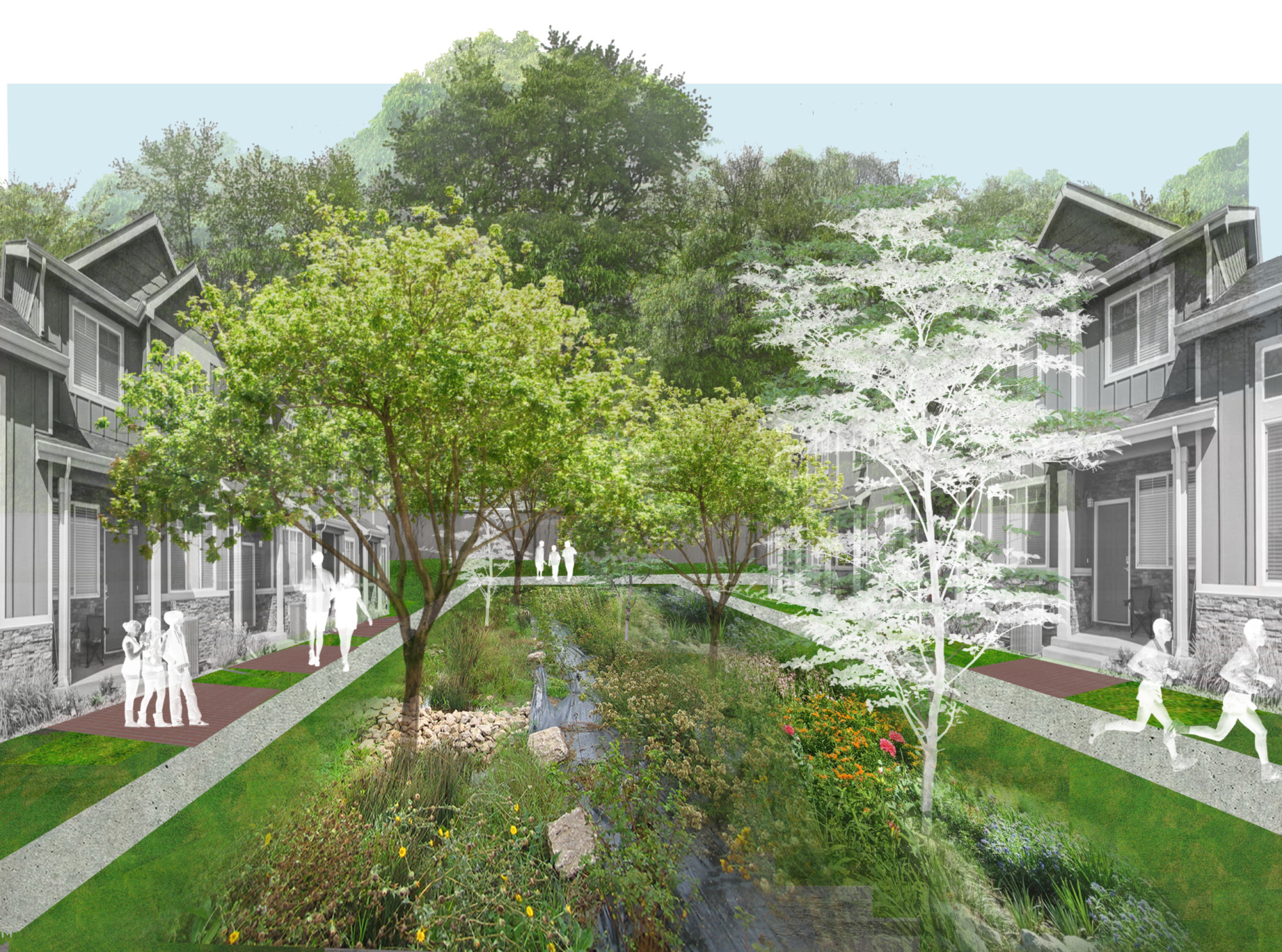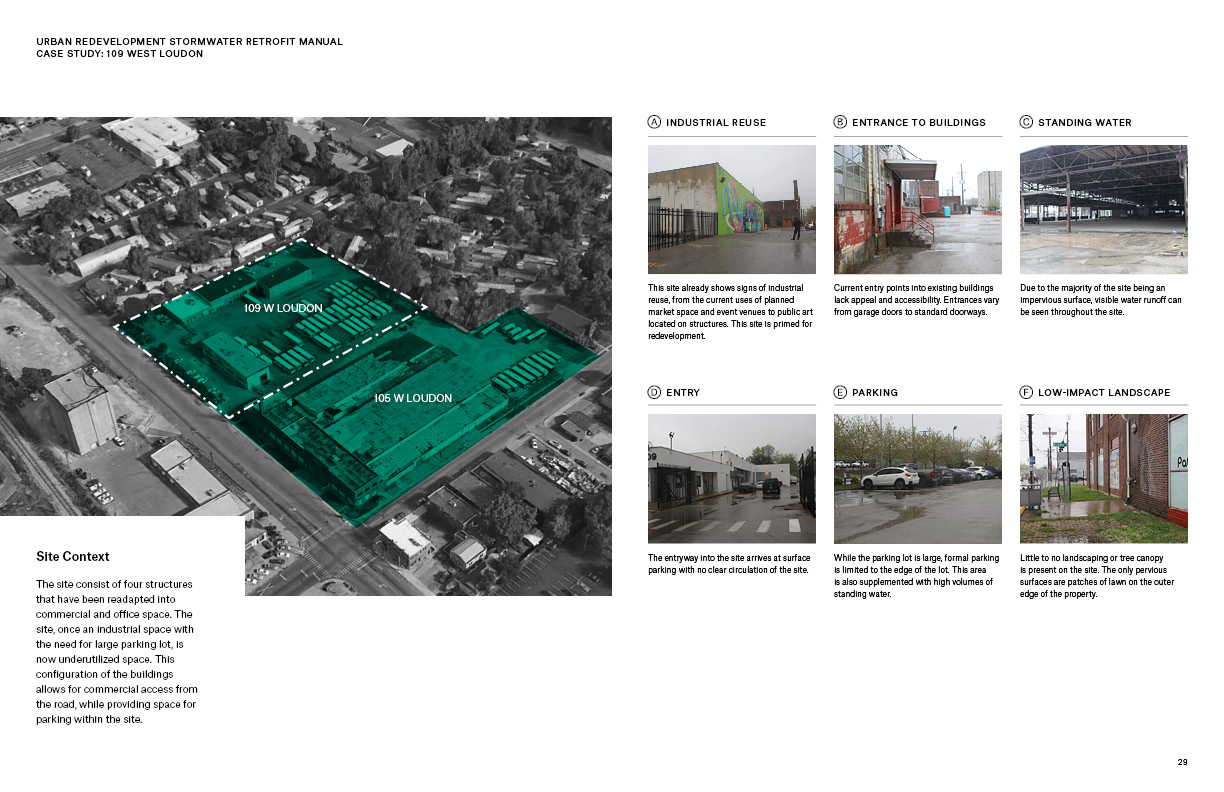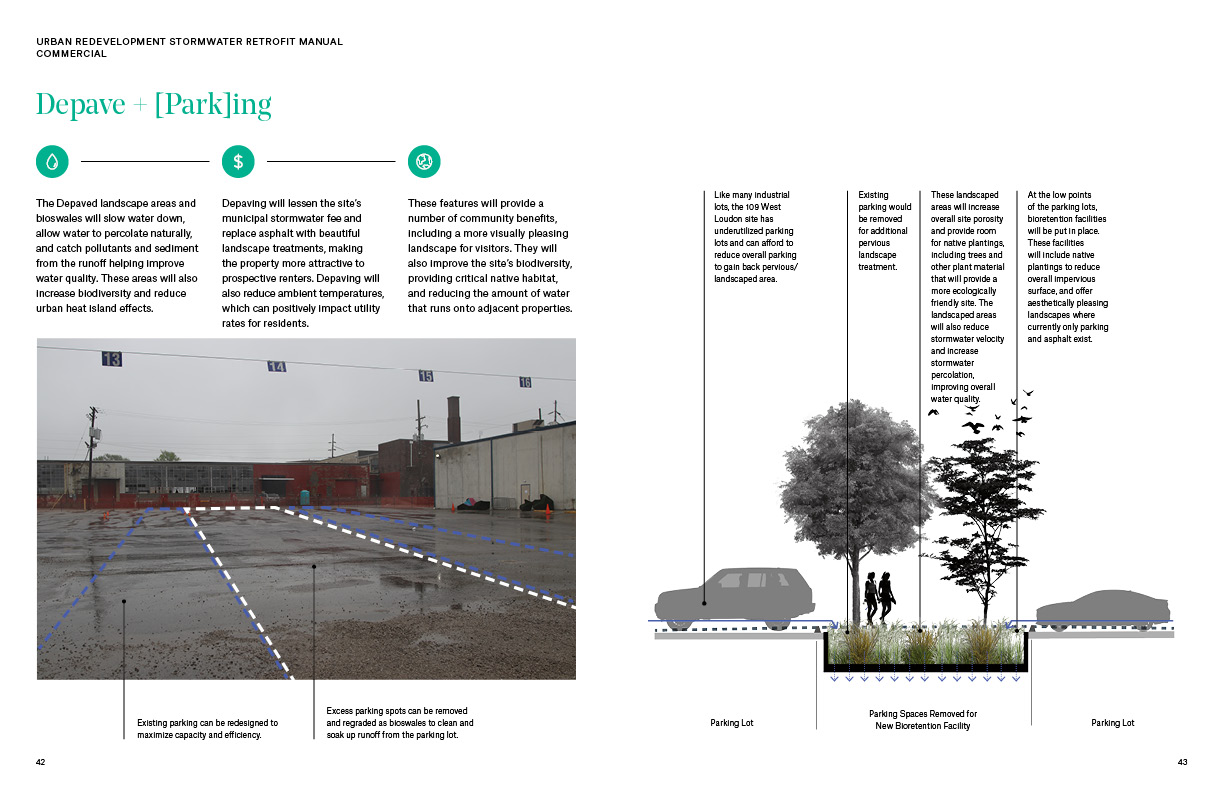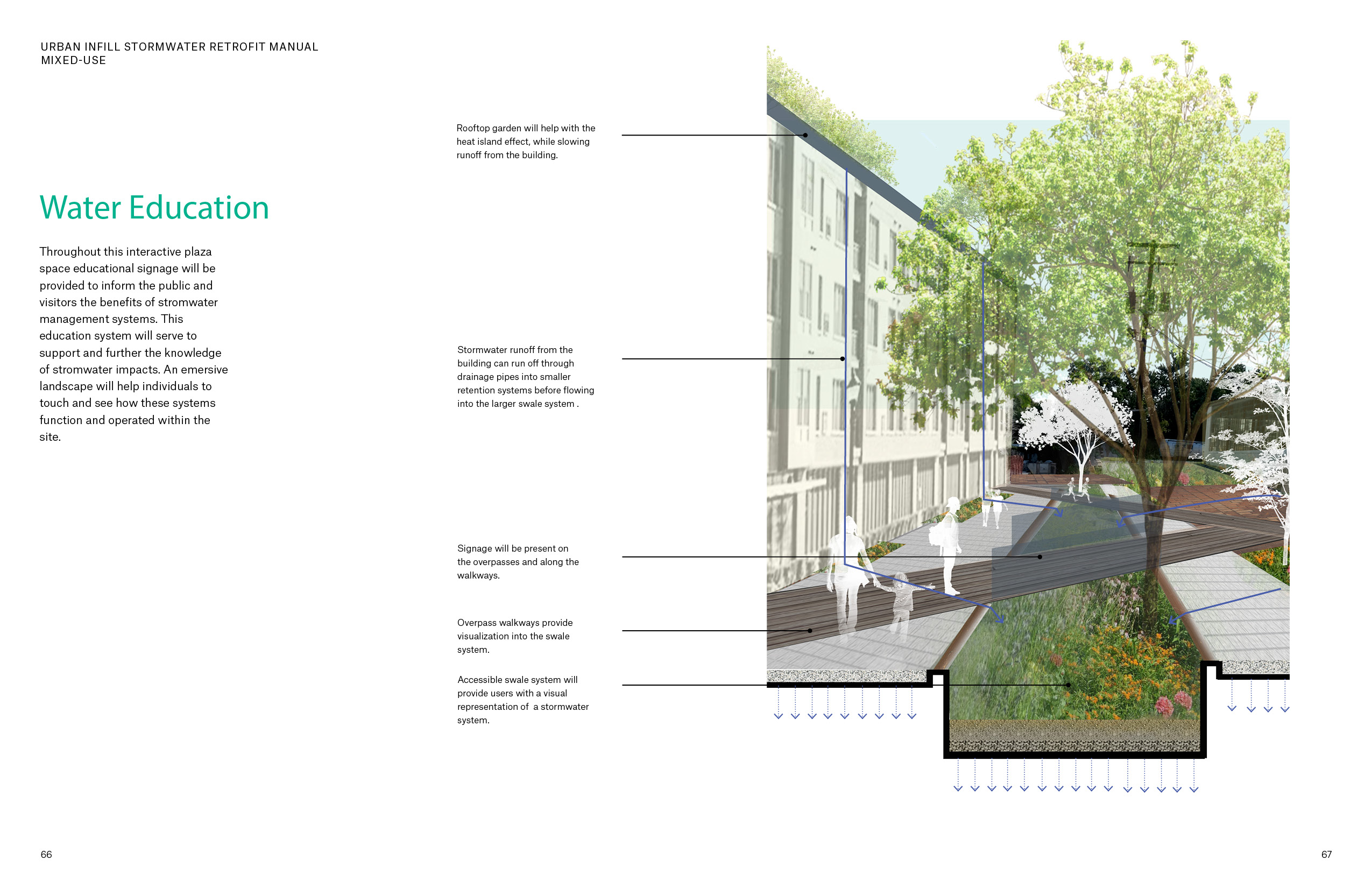Developed by Gresham Smith as a tool for agencies, developers and the public alike, the Urban Redevelopment Stormwater Retrofit Manual highlights immediate opportunities for dramatically improving stormwater management. By outlining innovative stormwater design alternatives for urban infill sites, the manual illustrates how these opportunities can reduce imperviousness, improve water quality, and ultimately add value to a site for property owners and the surrounding community.
sustainable redevelopment scenarios
acre case study site
user-friendly manual
Sustainable Solutions
Vacant and abandoned properties developed before green infrastructure requirements represent the most prevalent and available opportunities for urban redevelopment. Highlighting three land-use scenarios—commercial, multifamily and mixed-use—the manual showcases how Lexington can develop urban infills sustainably through innovative stormwater solutions.In each of these redevelopment scenarios, the manual explores various water quantity and water quality methods that can be utilized for each land use. All follow the Lexington-Fayette Urban County Government zoning ordinance for parking and landscape requirements.
Regional Context
The case study site in the manual exists within the Cane Run Watershed, which drains toward Georgetown, Kentucky, and has direct impacts on the residents’ drinking water source, the Royal Springs Aquifer.Integrating Green Infrastructure
The three redevelopment scenarios are focused on the circa 1970s 109 West Loudon property that currently exists as a light industrial site with a large, impervious parking lot. For each land-use scenario, the manual showcases how green infrastructure can be utilized and integrated within critical site components, such as parking lots, while adding ecological and placemaking value. The multifamily scenario, for example, evaluates how to organize housing units around a central, open space that doubles as amenity space/water improvement infrastructure.Breaking Things Down
Three major factors shape increasingly scrutinized infill projects in Lexington, Kentucky: population growth versus urban service boundary growth; an EPA consent decree to improve its stormwater system; and public opposition decrying: “Not in my backyard.” The manual will help educate the general public, the development community and local agencies about the responsibilities of developers.The manual includes “BMP-menities,” a creative way of thinking about stormwater infrastructure best management practices (BMPs) and how they can be used to add value to urban infill properties by making them site amenities.
A Triple Bottom Line Approach
The manual is also intended to serve as a guideline for developers, encouraging them to take a triple-bottom-line approach to sustainable design that looks beyond the natural resources typically associated with sustainability and defines how to measure and increase environmental, social and economic sustainability in communities. It offers simple diagrams to walk developers through the regulation process and see what requirements they fit within, what options are available to them, and finally, what BMP types best fit those scenarios.Collaboration & Engagement
As part of the overall process, we teamed with a local developer, a neighborhood nonprofit and a university to perform a series of public engagement activities that included community design workshops, a community radio show, and a university student on-site design seminar in which students conducted a visual stormwater analysis.Creating Better Places to Visit & Live
Recipient of the 2019 KYASLA Merit Award for Communications, the Urban Redevelopment Stormwater Retrofit Manual illustrates how sustainability doesn’t require compromise—showcasing urban redevelopment scenarios and opportunities that can lead to more environmentally resilient communities and ultimately better places to visit and live.Project Contact
Our team develops creative solutions for the world's toughest infrastructure problems.
Learn more about our Engineering expertise.

